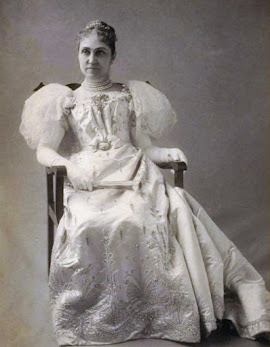We are Bahá'ís
A Baha'i family album with some brief biographical notes
May 15, 2019
April 5, 2019
March 10, 2019
February 15, 2019
January 8, 2019
December 12, 2018
November 12, 2018
October 16, 2018
September 8, 2018
Phoebe Apperson Hearst
Phoebe Hearst was a well-known philanthropist and the wife of Senator George E Hearst. She had embraced the Faith in 1898 through Lua Getsinger while on a visit to California. Shortly after she expressed her intention of visiting 'Abdu'l-Bahá in the Holy Land and invited several believers, among them Dr and Mrs Getsinger, Dr Khayru'llah and his wife, to join her, and completed the necessary arrangements for their historic pilgrimage to 'Akká. In Paris several resident Americans, among whom were May Ellis Belles, whom Lua Getsinger had won over to the Faith, Miss Pearson, and Ann Apperson, both nieces of Mrs Hearst, with Mrs Thornburgh and her daughter, were added to the party, the number of which was later swelled in Egypt by the addition of Dr Khayru'llah's daughters and their grand-mother whom he had recently converted.
(Adapted from ‘The Child of the Covenant’ by
Adib Taherzadeh)
August 15, 2018
Florence Breed Khan and Ali-Kuli Khan
Florence Breed was born in 1875 in Lynn, Massachusetts. She
passed away on 24 June 1950 in Englewood, New Jersey. She was a Baha'i actress.
Her parents were Alice Ives Breed and Francis William Breed, both also Baha’is.
In 1904 she married Mirza Ali-Kuli Khan. Their children met 'Abdu'l-Baha at
their home in Washington, D.C. on 23 April 1912.
Ali-Kuli Khan (Nabili'd-Dawlih) was born on 10 May 1879 in Kashan, Persia. He passed away on 7 April 1966 in Washington, D. C. He joined the Faith in 1895. In 1910 he became the Persian charge d'affaires to the United States and served in a number of diplomatic missions. He invited 'Abdu'I-Baha to a reception at the Persian legation on 17 April, 1912. He was also with 'Abdu'l-Baha when He attended a meeting at the home of Alexander Graham Bell on 24 April 1912 in Washington, D.C. He was a member of the Bahai Temple Unity in 1913 and 1917; and of the National Spiritual Assembly of the Baha'is of the United States and Canada in 1925 to 1926.
(Adapted from “Abdu’l-Baha in the West, A biographical guide of the people associated with His travels”, by Jan Teofil Jasion)



































